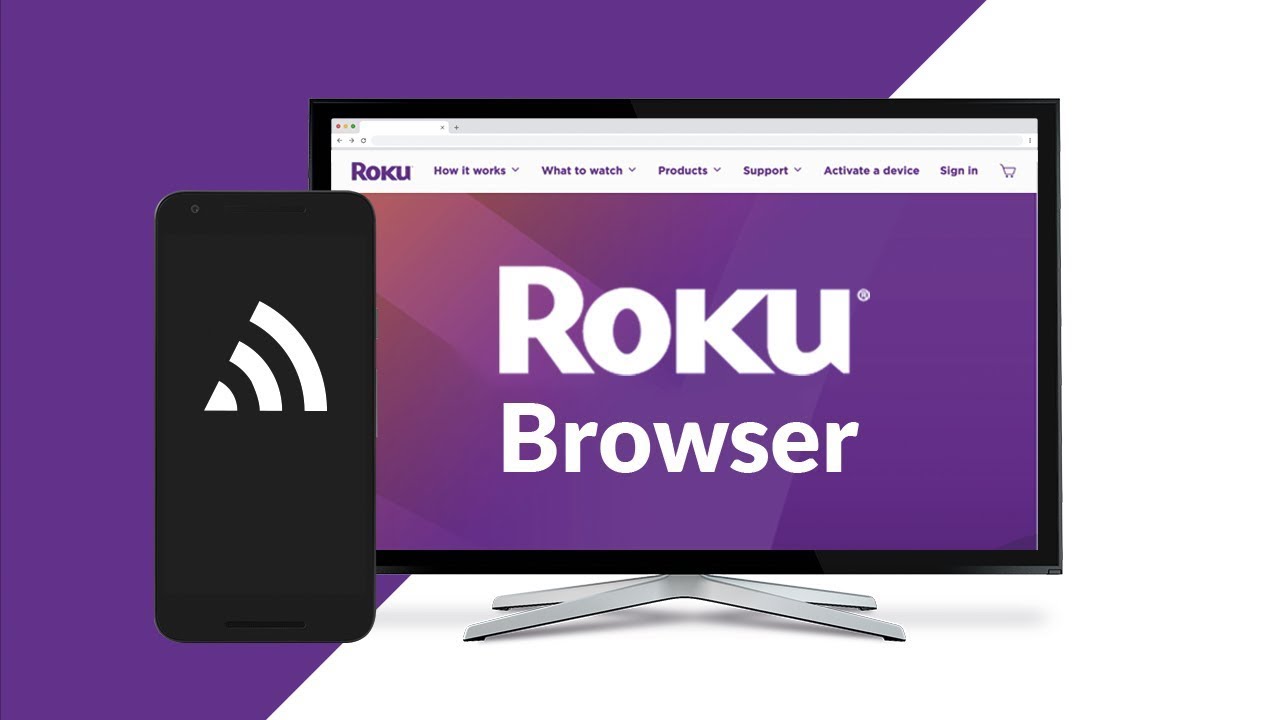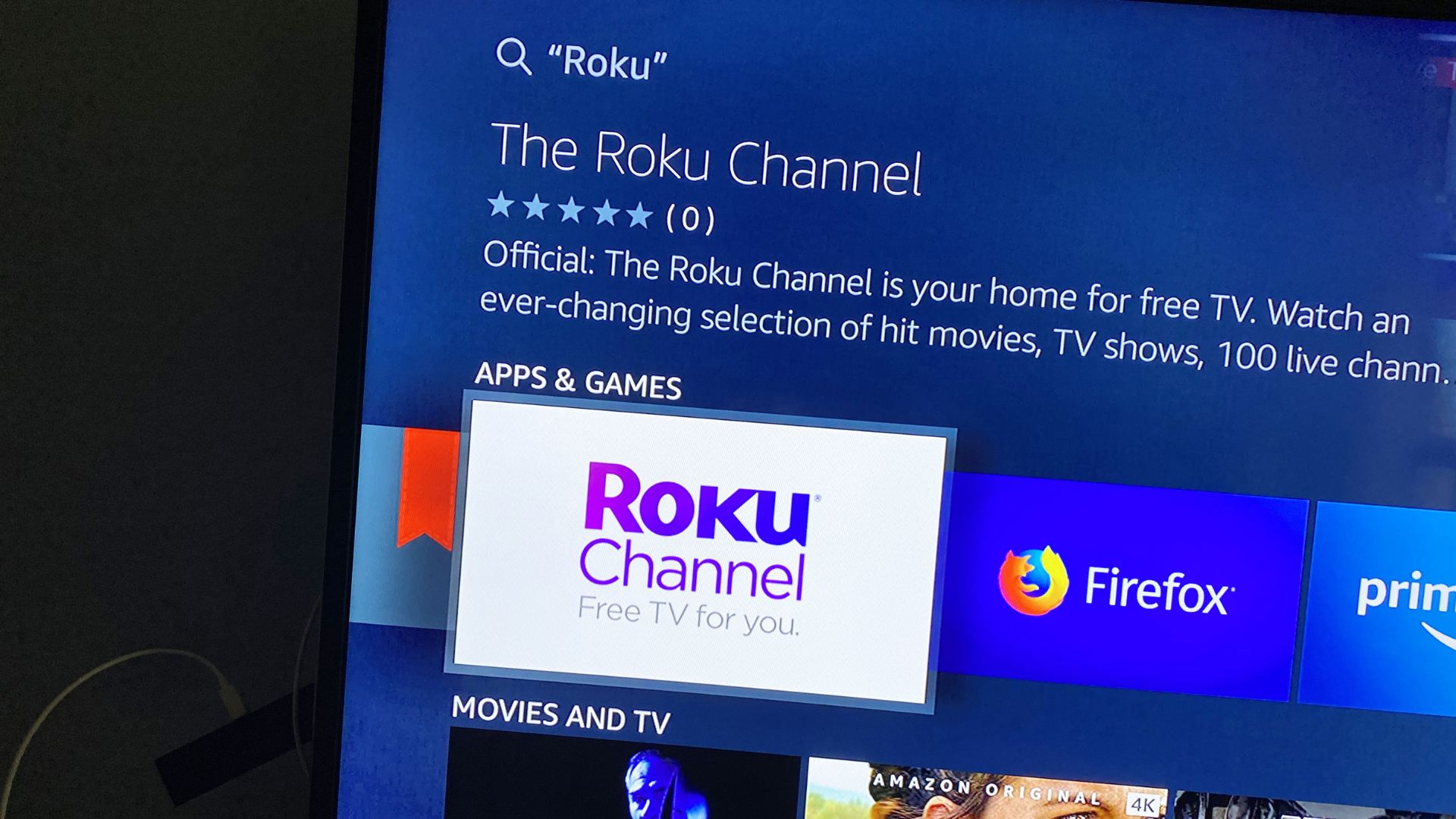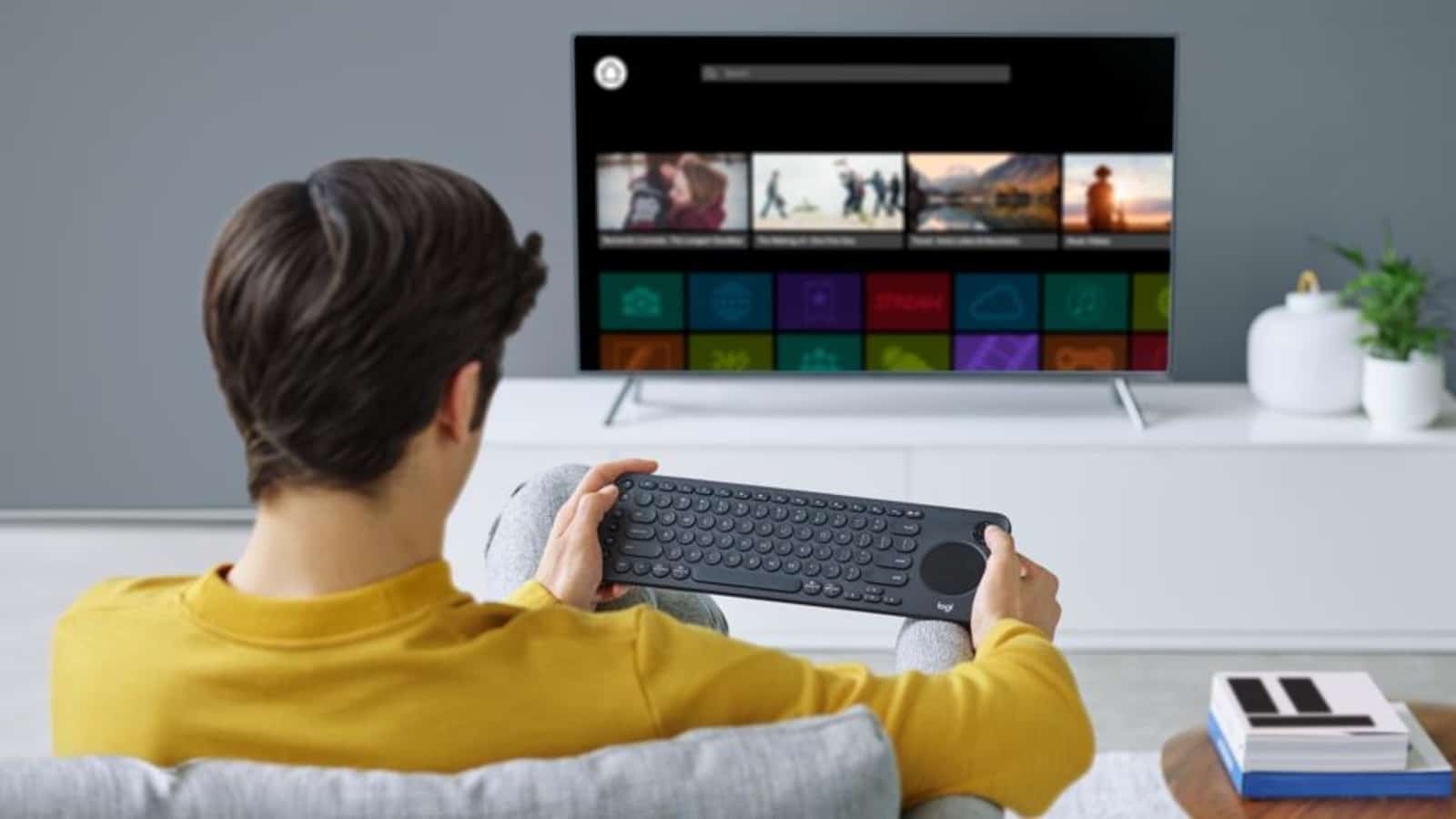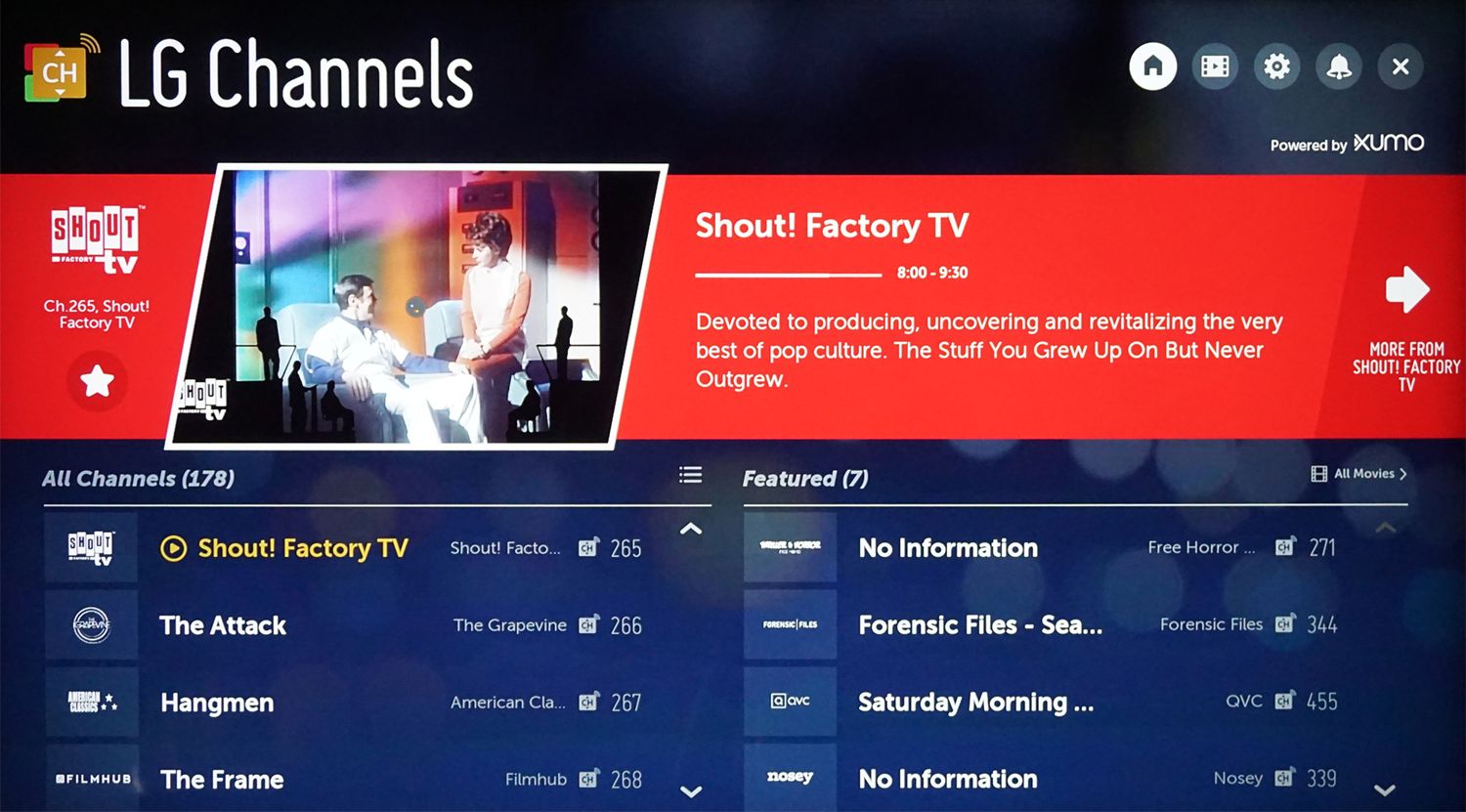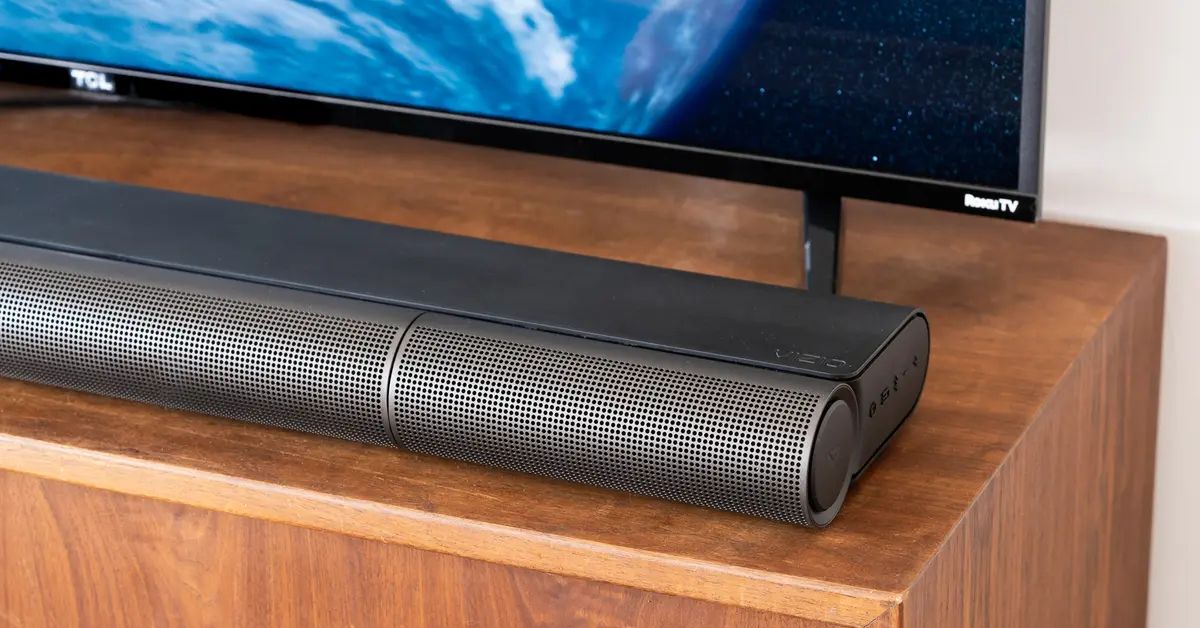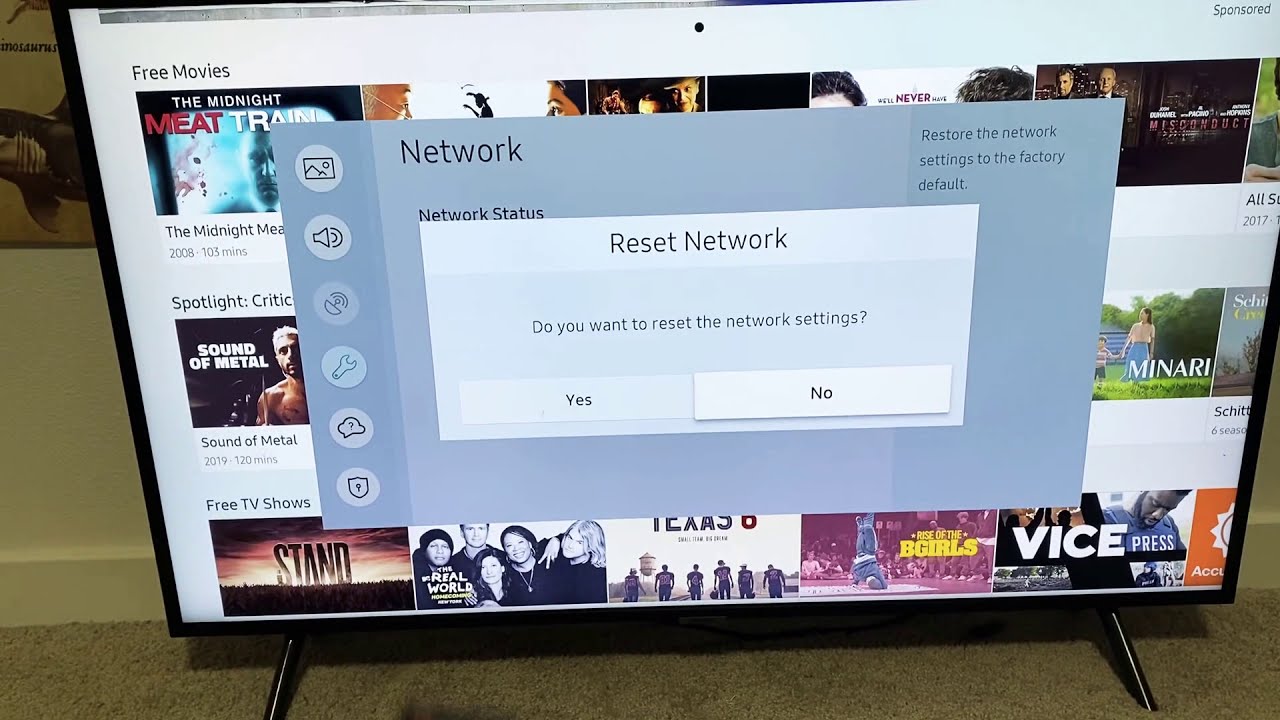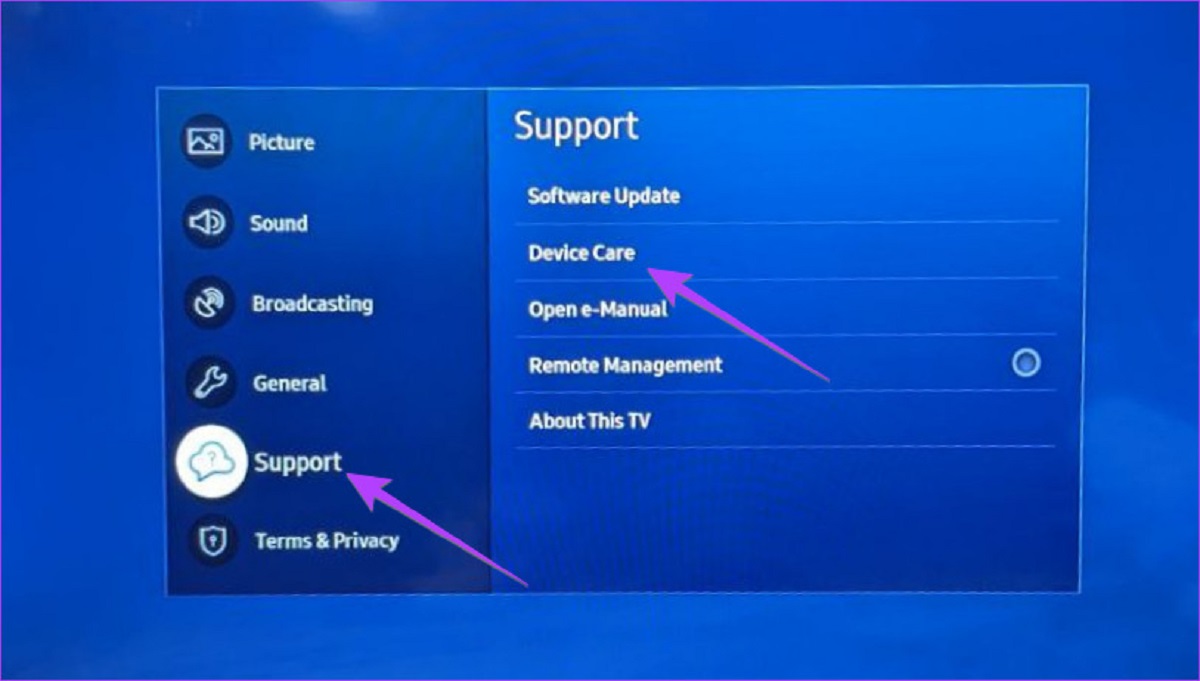Introduction
Welcome to the world of smart TVs! As technology continues to advance, traditional televisions have evolved into smart TVs, offering a wide range of features and capabilities that enhance your viewing experience. Whether you’re a movie buff, a sports enthusiast, or a binge-watcher of the latest TV series, choosing the right smart TV can make all the difference.
In this article, we will guide you through the process of selecting the perfect smart TV for your needs. We will discuss key factors to consider, such as screen size, display technology, resolution, smart TV platforms, connectivity options, audio quality, and more. By the end of this guide, you will be well-equipped with the knowledge necessary to make an informed decision.
With a plethora of options available on the market, it can be overwhelming to determine which smart TV is right for you. However, fear not! Our comprehensive guide will break down the different aspects to consider, ensuring that you find a smart TV that not only fits your budget but also fulfills all your entertainment desires.
Whether you’re a tech-savvy individual who enjoys exploring the latest features or a casual viewer who simply wants a reliable television for everyday use, this article is designed to help you navigate the smart TV world with confidence.
So, let’s dive in and begin our journey to choose the perfect smart TV that will transform your TV-watching experience. Whether you’re upgrading an existing TV or purchasing a new one, this guide will provide you with valuable insights to make your decision a breeze.
Screen Size and Display Technology
When choosing a smart TV, perhaps one of the most crucial factors to consider is the screen size. The screen size will determine the level of immersion and viewing experience you can enjoy. Generally, smart TVs are available in a wide range of sizes, from compact models around 32 inches to massive screens exceeding 75 inches.
The ideal screen size for your smart TV will depend on various factors, such as the size of your room, viewing distance, and personal preferences. As a general guideline, it’s recommended to measure the distance between your seating area and the TV screen and multiply it by a factor of 0.84. This will give you an approximate screen size that will provide an immersive viewing experience without straining your eyes.
Another important aspect to consider is the display technology used in the smart TV. The most common types of display technologies available are LED, OLED, and QLED.
1. LED: LED (Light Emitting Diode) technology is the most popular and affordable option in smart TVs. These TVs use an LED backlight to illuminate the display panel. LED TVs offer excellent brightness, color accuracy, and energy efficiency.
2. OLED: OLED (Organic Light Emitting Diode) technology is known for its superior picture quality and deep black levels. Each pixel in an OLED TV can independently emit light, resulting in perfect blacks and vibrant colors. OLED TVs also provide wide viewing angles and fast response times, making them ideal for movie enthusiasts and gamers.
3. QLED: QLED (Quantum Light Emitting Diode) technology, developed by Samsung, utilizes quantum dots to enhance the color accuracy and brightness of the display. QLED TVs offer bright and vivid colors, making them a great choice for HDR content.
Consider your budget, viewing preferences, and desired picture quality when choosing a display technology for your smart TV. LED TVs are a popular choice for those on a tighter budget, while OLED and QLED options provide premium performance but come at a higher price point.
By considering both the screen size and display technology, you can ensure that your smart TV provides an immersive and visually stunning viewing experience that enhances your entertainment pleasure.
Resolution and Picture Quality
The resolution and picture quality of a smart TV play a crucial role in determining the clarity and detail of the images displayed on the screen. When it comes to resolution, there are several options to consider:
1. Full HD (1080p): Full HD resolution provides a crisp and detailed picture, with a resolution of 1920×1080 pixels. It is an excellent choice for smaller screen sizes (up to 50 inches) and offers a good balance between image quality and affordability.
2. 4K Ultra HD (2160p): 4K Ultra HD resolution delivers four times the level of detail compared to Full HD, with a resolution of 3840×2160 pixels. It is the recommended choice for larger screen sizes (above 50 inches) and provides breathtaking clarity and sharpness. 4K content is becoming increasingly available through streaming platforms, Blu-ray discs, and gaming consoles.
3. 8K Ultra HD: 8K Ultra HD resolution represents the latest advancement in TV technology, boasting a resolution of 7680×4320 pixels. While it offers an unprecedented level of detail, it currently comes at a premium price and limited availability of native 8K content. It is primarily targeted towards professional applications or enthusiasts seeking the ultimate viewing experience.
In addition to resolution, other factors contribute to the overall picture quality of a smart TV. These factors include contrast ratio, color accuracy, brightness levels, and image processing technologies like HDR (High Dynamic Range).
HDR (High Dynamic Range): HDR technology expands the range of brightness levels that a TV can display, resulting in more detailed and lifelike images. HDR content preserves more details in both dark and bright areas, resulting in enhanced contrast and depth. Look for smart TVs that support HDR formats like HDR10, Dolby Vision, or HLG (Hybrid Log-Gamma), as they provide a more immersive viewing experience.
When choosing a smart TV, prioritize models that offer a higher resolution and support HDR technology. This combination ensures that you can enjoy stunning visuals that bring your movies, TV shows, and games to life. Consider your budget and the availability of content in order to make an informed decision regarding the resolution and picture quality that best suits your needs.
HDR and Dolby Vision Support
High Dynamic Range (HDR) is an essential feature to consider when choosing a smart TV, as it greatly enhances the visual quality of your viewing experience. HDR technology expands the range of colors and contrast that a television can display, resulting in more vibrant and lifelike images.
A notable HDR format to look for in a smart TV is Dolby Vision. Developed by Dolby Laboratories, Dolby Vision takes HDR to the next level by offering enhanced color accuracy, brighter highlights, and deeper blacks. It achieves this by using dynamic metadata, which adjusts the settings on a scene-by-scene basis, resulting in a more precise and optimized viewing experience.
Smart TVs that support Dolby Vision can deliver breathtaking visuals with stunning color reproduction and exceptional contrast. This technology ensures that you can enjoy movies, TV shows, and other content as the creators intended, with enhanced details and a more immersive image quality.
It is worth noting that not all smart TVs support Dolby Vision. However, many high-end models from reputable brands, such as LG, Sony, and Vizio, include this feature. When considering a smart TV, check the specifications and ensure that it supports Dolby Vision if you want to experience the ultimate HDR performance.
In addition to Dolby Vision, there are other HDR formats you may come across, such as HDR10 and HLG (Hybrid Log-Gamma). HDR10 is an open standard that is widely supported by most HDR content, while HLG is a format developed for broadcasting live HDR content. These formats can also provide an improved visual experience, particularly when viewing HDR content.
When selecting a smart TV, it is recommended to opt for a model that supports multiple HDR formats, including Dolby Vision. This versatility ensures compatibility with a range of HDR content and future-proofs your television for upcoming advancements in HDR technology.
By choosing a smart TV with HDR and Dolby Vision support, you can elevate your viewing experience to new heights, immersing yourself in stunning visuals and vibrant colors that bring your favorite movies, TV shows, and games to life.
Smart TV Platforms and Operating Systems
Smart TV platforms and operating systems are critical components of a smart TV, as they determine how you interact with the device and access various features and applications. Different smart TV brands utilize their own platforms or partner with established operating systems to provide a seamless user experience.
Some popular smart TV platforms and operating systems include:
1. Android TV: Developed by Google, Android TV offers a user-friendly interface with access to a wide range of apps and streaming services through the Google Play Store. It also integrates Google Assistant for voice control and supports popular streaming devices like Chromecast. Android TV is used by various manufacturers such as Sony, Philips, and Hisense.
2. Tizen: Developed by Samsung, Tizen is a robust operating system found on Samsung smart TVs. It offers a clean and intuitive interface, with a wide selection of apps and streaming services available. Tizen also supports voice control through Bixby, Samsung’s virtual assistant.
3. WebOS: Developed by LG, WebOS is known for its sleek and easy-to-use interface. It provides seamless integration with popular streaming services and offers a wide range of apps. WebOS also supports voice control through LG’s ThinQ AI assistant.
4. Roku TV: Roku TV features a simple and straightforward interface with a vast selection of streaming channels and apps. It offers a user-friendly experience and is renowned for its extensive content library. Roku TV is built into smart TVs from various manufacturers such as TCL, Hisense, and Sharp.
5. Apple TV: Apple’s smart TV platform is available on Apple TV devices and select smart TVs. It integrates seamlessly with other Apple devices and services, offering access to the Apple TV+ streaming service, iTunes, and a range of apps from the App Store.
When choosing a smart TV, consider the platform or operating system that aligns with your preferences and provides access to the apps and services you desire. The availability of specific streaming services, such as Netflix, Amazon Prime Video, or Hulu, may vary depending on the platform and region.
It is also important to ensure that the platform or operating system of the smart TV receives regular software updates and offers a smooth and responsive user experience. This ensures that you can enjoy new features, improved performance, and enhanced security.
By selecting a smart TV with a platform or operating system that meets your needs, you’ll be able to effortlessly navigate through content, access apps, and enjoy a seamless and enjoyable user experience.
App Availability and Content Selection
One of the key advantages of a smart TV is the ability to access a wide range of apps and streaming services directly from your television. Before making a purchase, it’s important to consider the app availability and content selection offered by the smart TV.
Most smart TVs will have access to popular streaming services such as Netflix, Hulu, Amazon Prime Video, and YouTube. However, it’s worth checking if the specific apps and services that you subscribe to or wish to use are available on the platform or operating system of the smart TV you are considering.
Additionally, consider the variety of apps and content available beyond streaming services. Some smart TVs offer a vast selection of additional apps for gaming, fitness, news, weather, and more. These apps can expand the functionality of your smart TV and provide a customized entertainment experience.
App availability and content selection can vary depending on the platform and region. It’s also important to note that some smart TVs offer app stores where you can download additional apps, while others have a predefined list of supported apps.
Another consideration is the user interface and ease of navigation through the apps. Look for a smart TV that provides an intuitive and user-friendly interface, making it easy to browse and select your favorite apps and content.
Furthermore, keep an eye out for smart TVs that support casting or screen mirroring from your mobile devices. This feature allows you to stream content directly from your smartphone or tablet onto your TV screen, giving you more flexibility and options for content consumption.
If you have specific content or app preferences, it’s a good idea to research and check the compatibility of the smart TV with those services. User reviews and expert opinions can also provide insights into the performance, stability, and overall user experience of the apps on a particular smart TV.
By considering app availability and content selection, you can ensure that your chosen smart TV provides a wide variety of options for entertainment, keeping you entertained with your favorite shows, movies, and apps.
Connectivity Options
When choosing a smart TV, it’s important to consider the connectivity options available, as they determine how you can connect and interact with other devices. Here are some key connectivity options to consider:
1. HDMI: HDMI (High-Definition Multimedia Interface) ports are essential for connecting external devices such as Blu-ray players, gaming consoles, soundbars, and streaming devices. Multiple HDMI ports allow you to connect several devices simultaneously, ensuring flexibility and convenience.
2. USB: USB ports enable you to connect USB drives or external hard drives to access multimedia files, including photos, videos, and music. USB ports can also power certain devices, such as streaming sticks or TV tuners.
3. Wi-Fi: Wi-Fi connectivity is essential for accessing online content, streaming services, and firmware updates. Look for smart TVs with built-in Wi-Fi capabilities supporting the latest Wi-Fi standards (e.g., Wi-Fi 5 or Wi-Fi 6) for fast and stable wireless connectivity.
4. Ethernet: Ethernet ports provide a wired internet connection, offering a more stable and reliable connection compared to Wi-Fi. If you have the option to connect your smart TV via Ethernet, consider using it for a smoother streaming experience, especially for high-quality content.
5. Bluetooth: Bluetooth connectivity allows you to wirelessly connect your smart TV with compatible devices such as headphones, speakers, or Bluetooth-enabled controllers. This feature is particularly useful for personal audio experiences or wireless audio streaming.
6. Screen Mirroring: Some smart TVs offer screen mirroring capabilities, allowing you to mirror the screen of your smartphone, tablet, or laptop directly onto the TV. This feature enables you to share photos, videos, presentations, or any other content from your mobile devices on the big screen.
7. Audio Output: Consider the types of audio output options available on the smart TV. Look for options like HDMI ARC (Audio Return Channel) or digital/optical audio output, as they provide better audio quality and compatibility with external audio devices such as soundbars or home theater systems.
Before making a purchase, ensure that the smart TV has the necessary connectivity options to accommodate your needs and devices. Assess the number and types of ports available, as well as their placement on the TV, to ensure easy access and convenience for connecting your devices.
By considering the connectivity options, you can ensure seamless integration with your existing devices and enjoy a hassle-free experience when connecting external devices, expanding your entertainment possibilities, and creating a more immersive home theater environment.
Audio Quality and Features
When choosing a smart TV, it’s essential to consider the audio quality and features, as they greatly impact your overall viewing experience. While smart TVs are primarily known for their visual capabilities, having superior audio can enhance the immersion and enjoyment of your favorite movies, TV shows, and games.
Here are some key factors to consider when evaluating the audio quality and features of a smart TV:
1. Audio Output: Check the audio output options available on the smart TV. Look for options such as HDMI ARC (Audio Return Channel), digital/optical audio output, or headphone jack. These options allow you to connect external audio devices, such as soundbars, home theater systems, or headphones, to enjoy enhanced audio quality.
2. Speaker Configuration: Take note of the speaker configuration of the smart TV. Look for models with multiple speakers or built-in subwoofers, as they tend to deliver richer and more immersive audio. Consider the location and placement of the speakers to enhance sound dispersion and ensure optimal audio performance.
3. Audio Enhancements: Look for smart TVs that offer audio enhancements such as virtual surround sound, Dolby Atmos, or DTS:X. These technologies create a more immersive audio experience by expanding the soundstage and adding depth and dimension to the audio, making you feel like you’re in the middle of the action.
4. Equalizer Settings and Audio Customization: Some smart TVs provide equalizer settings and audio customization options, allowing you to fine-tune the audio output to meet your preferences. Being able to adjust settings like bass, treble, and balance can help you achieve the desired audio quality and tailor the sound to your liking.
5. Bluetooth Audio: If you enjoy wireless audio streaming, consider a smart TV with Bluetooth capabilities. This allows you to connect Bluetooth-enabled speakers, headphones, or soundbars wirelessly, giving you more flexibility and freedom in terms of audio playback and personal audio experiences.
When evaluating the audio quality and features, keep in mind that while some smart TVs offer decent audio performance, the sound might not compare to dedicated audio systems. If you are particular about audio quality, consider investing in external audio devices for a more immersive and powerful audio experience.
By considering the audio quality and features, you can ensure that your smart TV provides clear, immersive, and well-balanced audio that complements the stunning visuals, creating a truly captivating entertainment experience.
Gaming and Input Lag
If you are a gamer or plan to use your smart TV for gaming purposes, it’s crucial to consider factors such as gaming capabilities and input lag in order to have a smooth and enjoyable gaming experience.
1. Gaming Performance: Look for smart TVs that are specifically designed for gaming or have gaming-focused features. These TVs often offer features like Variable Refresh Rate (VRR), Auto Low Latency Mode (ALLM), and high refresh rates. These features help reduce image tearing and stuttering, ensuring smooth gameplay with minimal distractions.
2. Input Lag: Input lag refers to the delay between pressing a button on your gaming controller and the action being reflected on the screen. Higher input lag can lead to a noticeable delay between your inputs and the on-screen response, which can significantly impact your gaming experience. Look for smart TVs with low input lag, ideally below 20 milliseconds, for a more responsive gaming experience.
3. Gaming Mode: Many smart TVs offer a dedicated gaming mode or specialized settings that optimize the display for gaming. Enabling this mode can reduce motion blur, enhance image clarity, and further reduce input lag, resulting in a better gaming experience.
4. HDR and Gaming: If you’re a gaming enthusiast, consider a smart TV with HDR support. HDR can significantly enhance the visual quality of games, providing more vibrant colors, deeper blacks, and brighter highlights. Look for a TV that supports HDR formats such as HDR10 or Dolby Vision to enjoy games with stunning visuals and improved realism.
5. Game Console Compatibility: Check the compatibility of your gaming console with the smart TV. Ensure that the TV supports the necessary connectivity options, such as HDMI 2.1, to take full advantage of the console’s capabilities. Also, verify if the smart TV supports the specific features and technologies of your gaming console, such as 4K resolution, high frame rates, or specific gaming modes.
6. Internet Connection: For online gaming, a stable and fast internet connection is crucial. Ensure that your smart TV has reliable Wi-Fi or Ethernet capabilities to support seamless online gaming. Additionally, look for features like Ethernet ports or strong Wi-Fi antennas to ensure a stable connection during online multiplayer gaming sessions.
When considering a smart TV for gaming, it’s important to prioritize features that enhance the gaming experience and minimize input lag. Gaming-focused models or TVs with advanced gaming features will offer the best results for enthusiasts seeking an immersive and responsive gaming experience.
By choosing a smart TV with gaming capabilities and low input lag, you can enjoy smooth, lag-free gaming sessions with stunning visuals, allowing you to fully immerse yourself in the gaming world and maximize your gaming enjoyment.
Voice Control and AI Assistance
With the advancements in technology, smart TVs now offer convenient voice control and AI (Artificial Intelligence) assistance features, making your TV-watching experience even more seamless and user-friendly.
1. Voice Control: Voice control allows you to navigate through menus, search for content, adjust settings, and control various functions of your smart TV using voice commands. Instead of fumbling with remotes or going through complex menu options, you can simply speak your commands, making the interaction with your smart TV more intuitive and effortless.
2. Virtual Assistants: Many smart TVs come with built-in virtual assistants, such as Google Assistant or Amazon Alexa. These virtual assistants are designed to perform a wide range of tasks beyond TV control. You can ask them questions, check the weather, control your smart home devices, set reminders, or even play music. By incorporating these AI-powered assistants into your smart TV, you can transform it into a central hub for all your digital needs.
3. Smart Home Integration: Virtual assistants integrated into smart TVs can also act as a control hub for your smart home devices. You can use voice commands to dim the lights, adjust the thermostat, or even lock your doors, depending on the compatible smart devices in your home.
4. Hands-Free Convenience: Voice control and AI assistance offer a hands-free experience, allowing you to control your smart TV from a distance without the need for a remote. This can be particularly beneficial for individuals with mobility issues or those who prefer a more convenient and natural way of interacting with their TV.
It’s important to note that the availability and capabilities of voice control and built-in virtual assistants may vary depending on the smart TV brand and operating system. Research the specific virtual assistant available on the smart TV you are considering and ensure that it aligns with your preferences and integrates well with other smart devices in your home.
By incorporating voice control and AI assistance into your smart TV, you can enjoy a hands-free and intuitive user experience. Whether you’re searching for content, adjusting settings, or controlling other smart devices in your home, the power of voice commands and AI technology puts control at your fingertips, or rather, the tip of your tongue.
Price and Budget Considerations
Price and budget considerations are always important factors when purchasing a new smart TV. The price range for smart TVs can vary significantly, depending on factors such as brand, size, display technology, and additional features.
Before making a purchase, it’s crucial to determine your budget and establish what features and specifications are most important to you within that budget. Consider the following factors when evaluating the price and budget for a smart TV:
1. Screen Size: As a general rule, larger screen sizes tend to come with higher price tags. Assess your viewing distance and determine the appropriate screen size that will provide an immersive experience without compromising your budget.
2. Display Technology: Different display technologies, such as LED, OLED, or QLED, come at different price points. OLED and QLED TVs generally offer superior picture quality but can be more expensive compared to LED TVs. Evaluate your priorities regarding picture quality and determine the display technology that fits your budget.
3. Resolution: The resolution of a smart TV also affects the price. 4K Ultra HD TVs tend to be pricier compared to Full HD models. Consider your preferences and the availability of 4K content when determining if the higher resolution is worth the additional cost.
4. Additional Features: Extra features such as HDR support, smart home integration, voice control, or gaming capabilities can significantly impact the price of a smart TV. Prioritize the features that are most important to you and allocate your budget accordingly.
5. Brand and Quality: Reputable brands often come with a higher price tag due to factors such as build quality, customer support, and reliability. Research different brands and models to determine which ones offer the best value for your budget.
6. Budget-Friendly Options: Keep an eye out for deals, sales, or discounted models that offer good value for money. Consider purchasing previous year’s models, as they may provide similar features and performance at a lower cost compared to the latest releases.
When considering the price of a smart TV, it’s important to strike a balance between your budget and the desired features and specifications. Set a realistic budget and prioritize the features that matter most to you in order to make an informed decision.
Ultimately, the right smart TV for you is the one that fits your budget and offers the features you value most. With careful consideration of price and budget, you can find a smart TV that delivers a great viewing experience without breaking the bank.
Final Thoughts and Recommendations
Choosing the perfect smart TV can be an exciting but daunting task, considering the wide range of options available in the market. By considering various factors such as screen size, display technology, resolution, smart TV platforms, connectivity, audio quality, gaming capabilities, and price, you can make an informed decision that best aligns with your preferences and budget.
Here are a few important points to keep in mind as you make your final decision:
1. Prioritize the factors that matter most to you: Determine your specific needs and preferences when it comes to screen size, picture quality, audio performance, smart features, or gaming capabilities. This will help you narrow down your options and find a smart TV that caters to your specific requirements.
2. Research and compare models: Take the time to research and compare different models, considering factors such as customer reviews, expert opinions, and overall user experiences. This will give you valuable insights into the performance, reliability, and quality of the smart TVs you are considering.
3. Check app availability and content selection: Verify that the smart TV you choose offers app availability for your preferred streaming services and a wide range of content selection. Ensure that the platform or operating system supports the apps and services you desire to access on your smart TV.
4. Consider future-proofing: If possible, invest in a smart TV with future-proofing capabilities. Look for features such as HDMI 2.1, advanced HDR support, and compatibility with emerging technologies. This will ensure that your smart TV remains relevant and up-to-date for years to come.
5. Set a realistic budget: Determine your budget and identify the features and specifications that are most important to you. Remember to strike a balance between price and value, considering reputable brands and budget-friendly options that offer a good combination of quality and affordability.
Ultimately, the perfect smart TV for you is the one that meets your needs, preferences, and budget. By considering all the factors discussed in this guide and conducting thorough research, you can confidently select a smart TV that will provide you with an exceptional viewing experience.
Remember, a smart TV is not just a mere entertainment device; it’s an investment that will enhance your home entertainment for years to come. So take your time, explore your options, and choose wisely to bring the magic of cinema and the world of entertainment right into your living room with a smart TV that fits your lifestyle.









